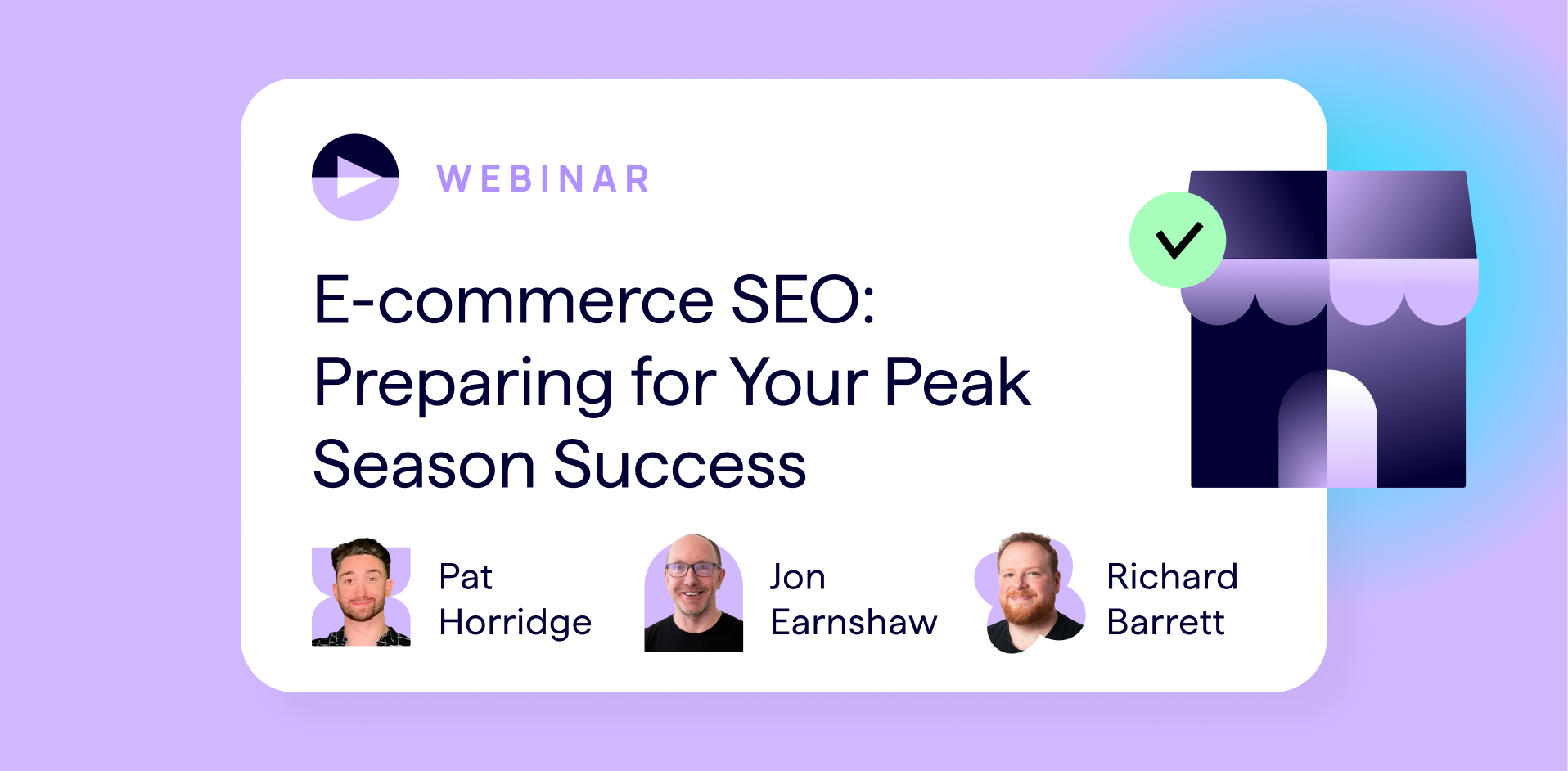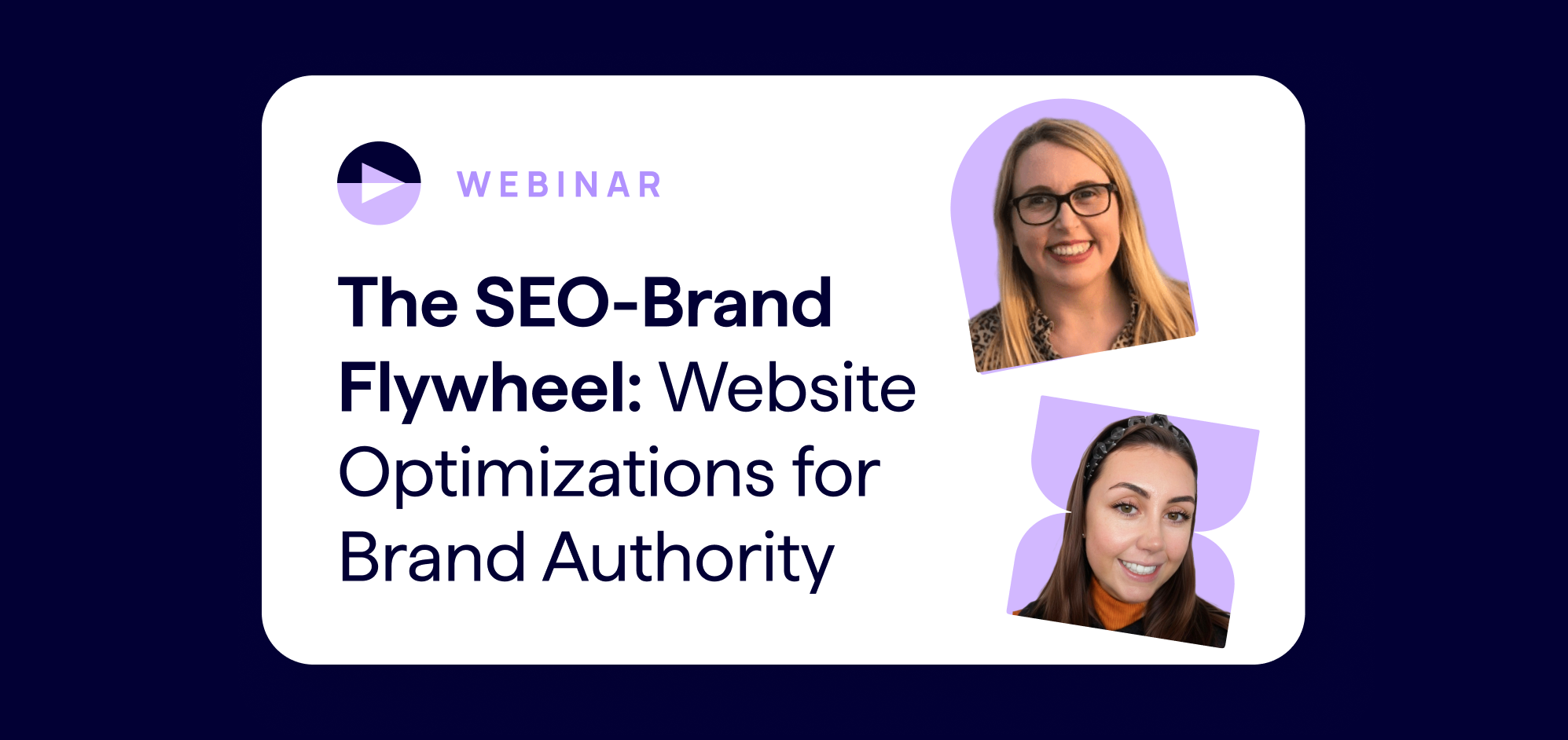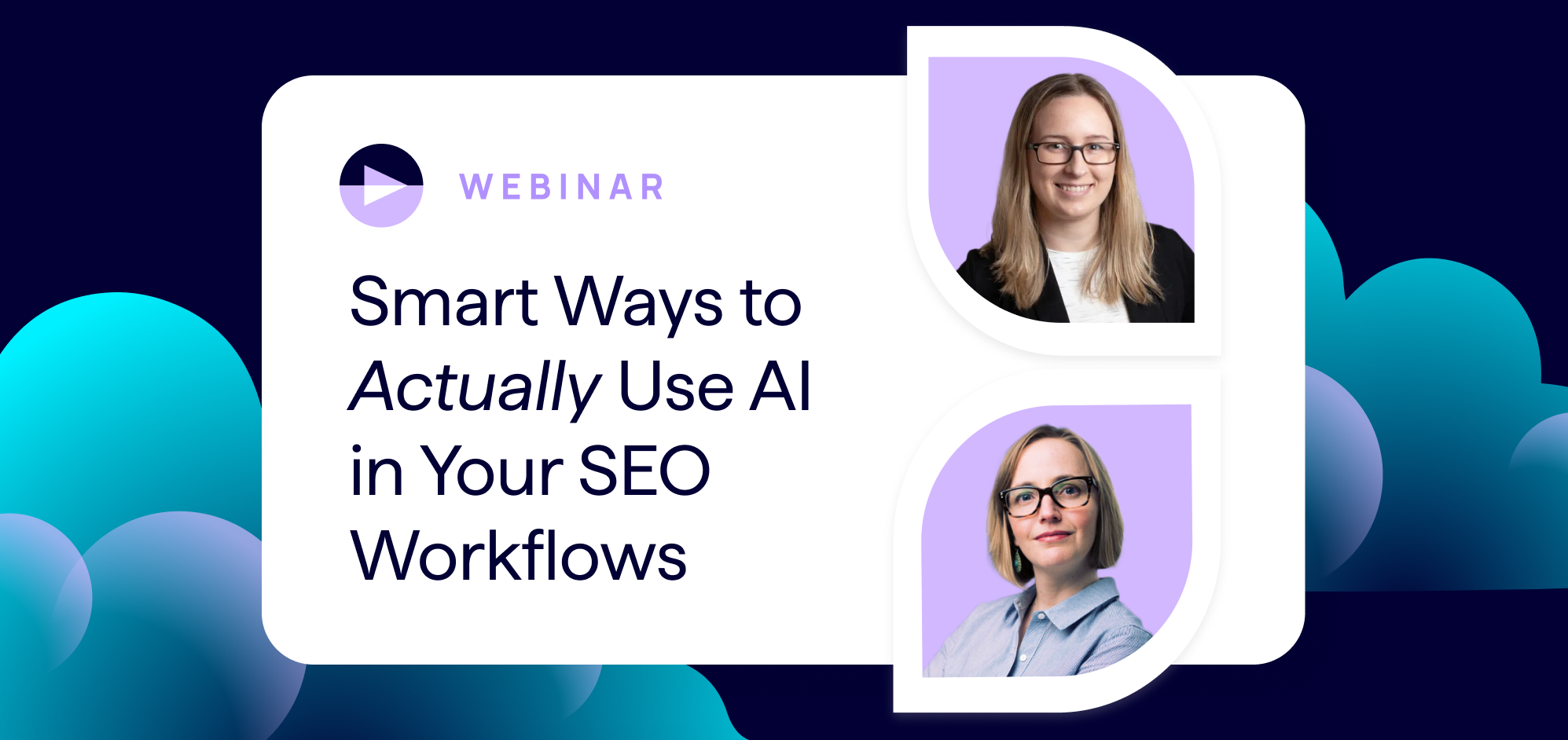This week’s on-demand webinar is a deep dive into how we can optimize our content.
This past Wednesday, we were pleased to welcome Rebekah Conway in conversation with our very own Senior Technical SEO, Anne Berlin of Lumar’s professional services team. Conway draws from her experience as a content strategist at The Digital Maze and Boom Online Marketing. She talks about the real value of content, as well as the missed opportunities and challenges – before leading us through her four key areas for content optimization.
Read on for our key takeaways, or watch the full webinar – as well as the Q&A – in the video embed above.
The value of content
“The one tactic at every single journey point – at every channel – is content,” Conway says. “It’s the most necessary part of digital marketing, in my opinion.”
She points to the massive impact that great content can have on ROI – across purchases, cross-sells, and upsells. Content also helps build relationships and strengthens the connection between audience and brand.
Webinar poll results: SEO is the biggest content challenge for attendees
During our live webinar session, we asked attendees: “What is your organization’s biggest challenge relating to website content?”
Here were the results from the live poll:
- SEO is our biggest challenge: 32.5%
- Content strategy is our biggest challenge: 20%
- Content production is our biggest challenge: 17.5%
- Content quality is our biggest challenge: 15%
- Content operations is our biggest challenge: 5%
- “Other”/ Something else is our biggest content challenge: 2%
Finding missed content opportunities — is your content reaching its full potential?
According to Conway, some signs that your website’s content might not be reaching its full potential include:
- Lots of traffic, but no conversions (inc. assisted conversions)
- No visibility (rankings, impressions)
- No engagement (high exit or bounce rates)
- Broken user journey (visitors not following the click journey you envisioned)
- Visitors not finding what they were looking for
Content challenges that lead to missed opportunities
There can be many reasons for these missed content opportunities:
Changing goalposts
“If you’re constantly being told to target different things and to leave this campaign there and focus on that, or if you’re just being asked to generate report after report – you’re not going to have that chance to make a tangible difference with content,” Conway says.
“Content takes so long and it’s so valuable and it’s so worthwhile, but if those goalposts are changing and you don’t have that input then it’s a huge challenge to try and overcome.”
Time & budget restrictions
“Every year, it’s taking a lot longer as an industry to create really solid worthwhile content,” Conway says.
“People are getting smarter. Customers want more from you. Competitors are getting better at what they’re doing. And there are more competitors in general.”
Creating great content also requires an investment in strong writers. Budget restrictions can be particularly challenging for content marketers working on the agency side of things, as some clients may simply not have the budget to fully reach their potential with content production.
Algorithm updates
Conway points out that, in the space of one year, we’ve had Google’s page experience update, the broad core update, the product reviews update, another product reviews update, the October 2022 spam update, and the helpful content update (HCU).
“[Keeping up with search engine algorithm changes is a] huge challenge,” she says, “because they’re coming out so often now it’s really hard to pinpoint which algorithm update is having an impact on your content performance.”
Here are just a few of Google’s algorithm announcements from the past few months in 2022 alone:
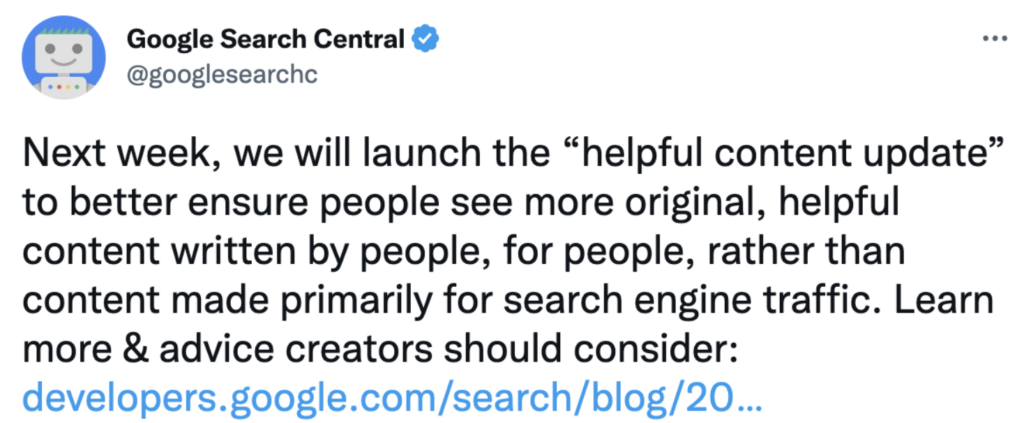
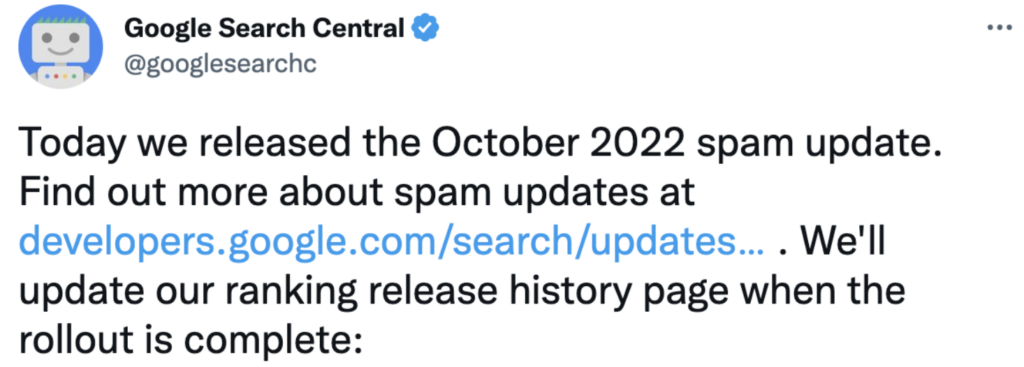

Lack of audience identification
“If you’re not being given the information you need about your target audience, you can’t communicate to them in a way they want to be spoken to, you can’t meet them at their paying points, you can’t create that content that’s going to help them figure out what to buy, when to buy it, who to buy it from.”
Lack of tracking
“If things aren’t set up the way they should be,” Conway says, “that lack of tracking can really hinder your performance metrics and you might not quite be able to figure out what’s going well and what’s not going well.”
Lack of training
While staff may have excellent writing and content production skills, they may not be trained to really understand what works best for boosting conversions from content or keeping users engaged on a certain channel.
Lack of audience trust
“The internet can be quite a spammy and scammy place,” Conway says. “So building those trust signals takes a long time and without it, you’re going to have a lot of missed opportunities.”
4 key areas for content marketing optimization:
1.) Search Engine Optimization
- Schema markup – use your content to speak directly to Google
- Search term research
- Optimized images – images impact page speed and UX
- Optimized navigation – using the right terminology is often overlooked
- Submitting to index – give your content a fighting chance
Further reading:
Lumar’s Website Intelligence Academy >> Topic: Website Content
6 types of unhelpful content you might not know you have, and how to improve them
Unlocking the hidden potential of product listing pages
A basic guide to website navigation optimization for better conversion rates
What is schema markup? How to use it for SEO
Talk fast, drink coffee, optimize images
2.) Natural Language Processing
- Enriching content – providing more opportunities to rank [helpful tool: Surfer SEO]
- Using specific language that’s accessible to everybody (avoid academic, complicated writing)
- Connecting entities – for better online synergy
- Taking a human-first approach to creating content
- Telling stories – in a natural, audience-first way
Further reading:
How to use relationships to level up your SEO
How to apply semantic SEO to different niches
Storytelling in Marketing: The fundamentals
3.) User Journey Optimization
- Organize website navigation with the user in mind
- Click journeys – make these as short as possible. ‘Every click has a carbon cost!’
- Use hub and spoke approach – do all the heavy lifting
- Create content that covers the entire user journey
Further reading:
Developing content for the customer journey
Content mapping, search optimization, and the buyer’s journey
What is a customer journey and why does it matter for SEO?
25 tips to optimize your content for people and search engines
A basic guide to website navigation optimization for better conversion rates
3 ways the customer journey can guide SEO
4.) Corporate Social Responsibility
- If the internet were a country, it would be the 7th biggest polluter
- 41% of consumers are looking for environmental information on brands and products using social media
- Communicate your CSR strategy and sustainability values on all relevant pages
- Make sure all content is valuable – this is good for people and the planet
- Be flexible in your content – finance options etc.
Conway points to how search engines are helping brands promote sustainability. Google now allows businesses to add ‘recycling’ to their business attributes. Ecosia crawls sites and will add a leaf icon to sites they deem environmentally responsible.
Further reading:
What I’m learning about local sustainability from renowned marketing experts
Sustainable Digital Marketing: How to create a corporate social responsibility strategy
How to get started with corporate social responsibility & purpose-driven marketing
How to put together a corporate social responsibility strategy (and why it matters)
Purpose-driven copywriting (What it is and how to do it)

For more on website content optimization, check out Lumar’s Website Intelligence Academy >> Content Optimization Collection.



